By the time March and April are here in New England, most of us are pulling on the lead to start paddling. Here are some tips to get ready for the season.
Hopefully, you stored your surf ski to protect it over the off-season. Before you get on the water for your first paddle, I suggest the following maintenance checks.
Surf Ski Check
- Check the rudder, rudder post, rudder lines, rudder yoke, and make sure the rudder is tightened and replace any of these if needed.
- Check the leash attachment point to make sure it is still secure.
- Check the bailer by carefully opening and closing and use a lubricant if needed. Hopefully, you stored the bailer open to lessen the compression of the gasket to prolong its life. Close it and pour some water into the footwell to see how much or not it is leaking.
- While you may have not adjusted your footplate in a while, mark where you have it, and then move it back and forth to ensure it is not corroded in place by the sand, water, and salt.
- Check all fittings of the rails, footplate, foot strap for corrosion and get replacement parts if needed.
- If you have an inspection port on your ski, open it up and do the smell test and look inside it for possible leaks depending on how you stored it.
- Check to make sure the vent, vent hose, stopper, etc are secure for remounting practice and proper venting of the ski.
- Check all the fittings of the handles and deck bungees to make you they are still tight.
- Visually inspect the ski for any damage, etc.
- If you did not wax it before you properly stored it, now is a great time to wash and put a coat of wax on it. Any wax will do, car, marine, etc. This will protect if from superficial scratches. I suggest waxing it once a month at a minimum to protect it from the sun, dirty watermarks, etc. A clean boat has better resale value.
Paddle Check
- Visually check the blades, shaft, and attachment locker or fitting. Nothing like a failed paddle when paddling, yes it has happened. Make sure the blades are still secure on the shaft, give it a hand twist. Rinse after every paddle.
- Check to make sure you can read the length and angle of where you want your paddle. Mark it if you can not.
- Replace whatever paddle grip you are using if needed and replace markers/stoppers where your hands should always be.
- Buy a replacement paddle as a spare in case you damage yours, or leave it on the beach. Set it up the same way as your main paddle.
Safety Check
- Check your paddle, leg, waist leash for any signs of wear at all attachment points. Do Not skip this step! This literally is your lifeline. Check all fittings, velcro to make sure they can handle the load once you capsize.
- Check all your communication devices(phone, Vhf, beacon, whistle) to ensure you remember how to use them, have the latest software updates, etc. Check the waterproof pouches too for damage or leaks and the attachment points, lanyards.
- Check your Pfd and make sure it has all the pockets, adjustments for fit, color, flotation you need for the waters you paddle in. There are many PFD’s available now that are excellent. Make sure it is properly fitted before you capsize.
-
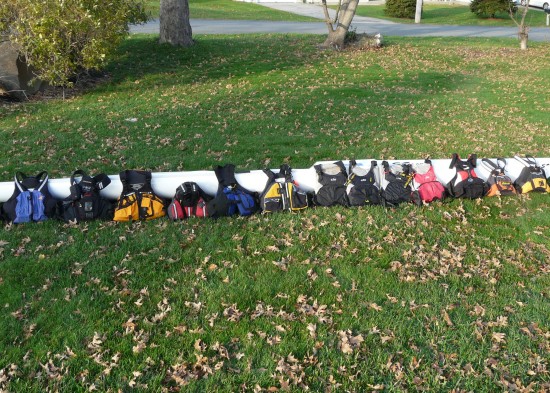
2012 Pfd collection, Even in 2022, the most important thing is to wear it.
Car Racks
- Very important to check all the fittings on your car rack to make sure they do not slip or come off your car. Yes, it has happened. Proper racks are a must! Many of us use Good Boy V bars and swear by them. So spend a few hundred and get a proper rack. Going over the Newport Bridge with a side wind of 30 mph, watching your 4K ski moving around is an uneasy feeling.
- Make sure your buckle straps are in good order and not rusted or very old, and make sure the bungees used are secure and not frayed or NOT knotted securely.

Clothing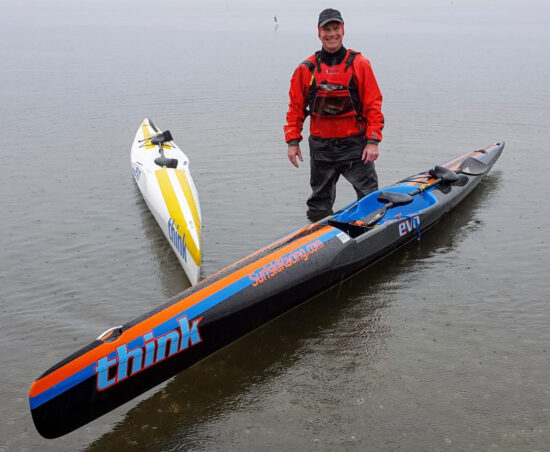
- If you paddle the winter using a drysuit, check the gaskets, seams for waterproofness. Check your paddling booties too!
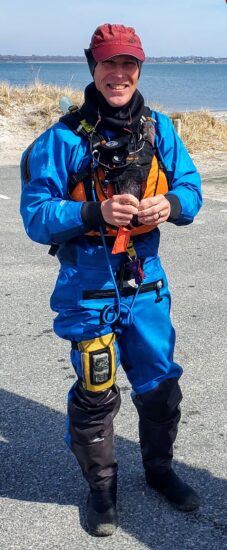
Big Wave Bill Leconte is ready for action on the high seas.
Skill, Fitness, Judgement Levels
- If paddling 40-degree weather, and water temps of 40 degrees make sure you are making good judgments as you ease into the paddling season. You should be questioning your fitness, skill, and judgment depending on a host of reasons when you launch on a particular day. Did you paddle over the winter, did you maintain some level of fitness, are you ready to go out on a rough day so early in the season, are you coming back from an injury, etc. Make the necessary adjustments to be safe. While you may be fit, is your paddling partner at the same level you are for that particular day’s paddle. Decide before you leave the beach whether you go out or put in somewhere else or simply go for a bike ride or a run instead and plan for another day.
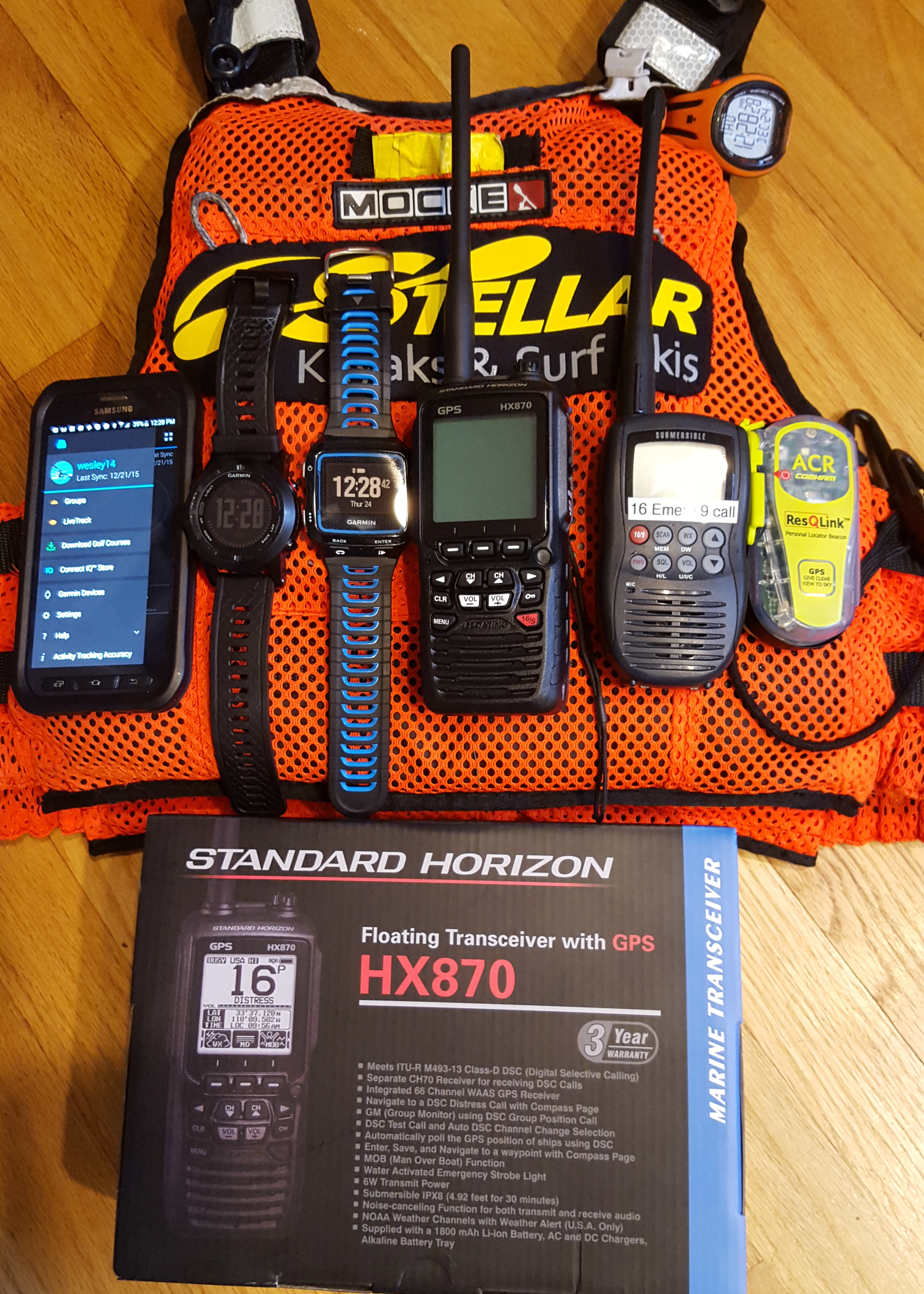

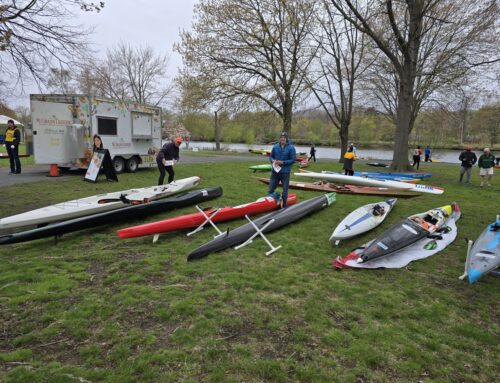
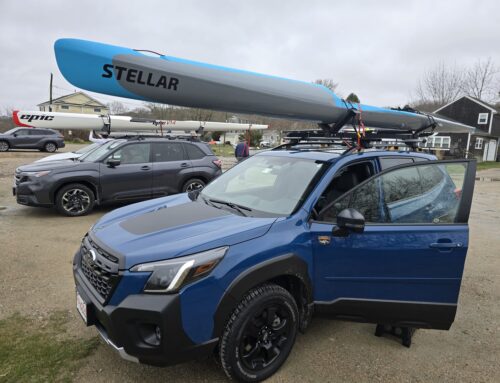
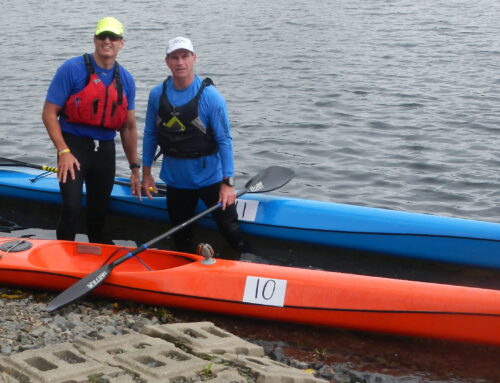
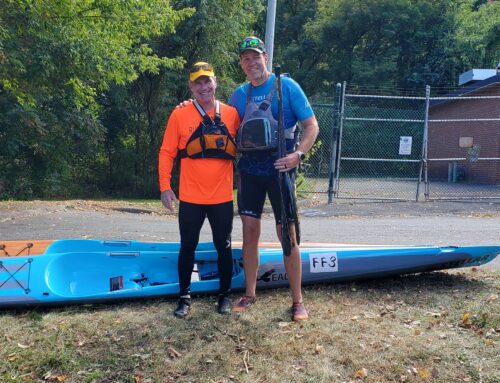
Leave A Comment
You must be logged in to post a comment.